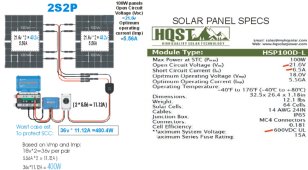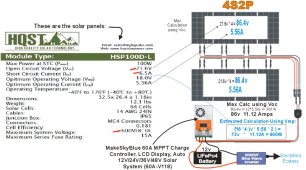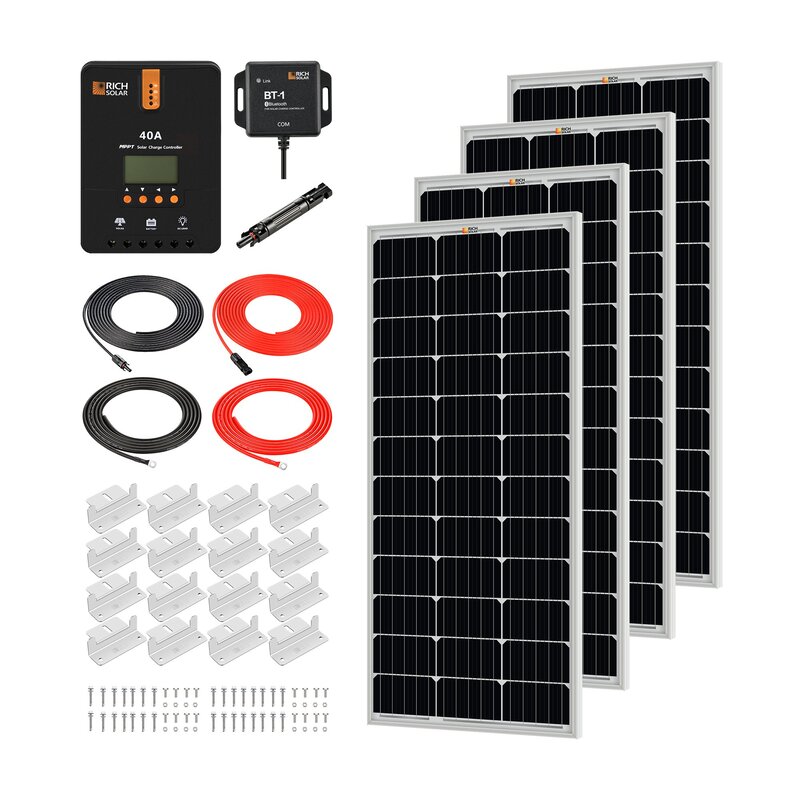Since you're nowhere near the maximum input level I wouldn't worry about it. Something that took me a while to wrap my head around is that solar panels don't PUSH power into a system, the system ASKS for power and the panels provide what is asked. If your system is shut down and only drawing 50w, the panels are only going to produce 50w. If the system is asking for 500w they're going to try to produce 500w and just not make it. In your case the 6.5a is what could be produced if you just dead shorted the wires of the panel together which is a "bad thing" and the 5.5a Imp is what the panel can shove through the wires if it really has to. Since you're not trying to shove massive amounts of current through there, there's no worries. When calculating for "How much
Should I get out of these panels" use the 5.5a Imp numbers.
Nope, the reason fuses aren't needed is because you only have 2 strings. An oversimplification might be that if you have a pair of 200w strings and one of those strings has a short, the other string balances it out and you just lose performance. If you had 3 sets of 200w strings and one string shorted, then that would be 2x the power from the good strings trying to go through the path of least resistance and into the bad string. Now you want a fuse to pop instead of your string. Basically, you don't need fuses unless you have 3 or more strings.
Other than that it looks like your sketch is spot on.






